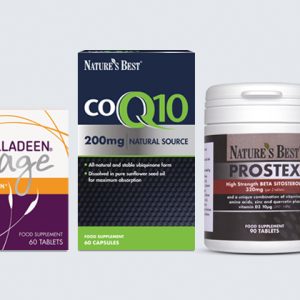Selenium is an amazing element and we have outlined a few of its salient qualities:
Selenium, along with iodine are critical minerals for proper thyroid activity. Selenium deficiency is a major reason for thyroid problems in people. It is required for so many enzymes that it’s not possible to count them all.
Selenium is required for the activity of certain areas of the brain that open a person to higher emotions and higher thought. In this sense, selenium is the mineral that allows higher thought in human beings. For this reason we call it a spiritual mineral. It is one of the major minerals needed for mineral balancing. Not all sources of selenium are equally bioavailable. This is very important to know!
The best sources, in our view, are sardines, blue corn, onions and a few other cooked vegetables.
Everyone needs more bioavailable selenium. Increasing selenium in the body is a goal of all mineral balancing programs. The recommended foods contain a large amount and it is often given in supplement form, as well.
FOOD SOURCES WE RECOMMEND
Most foods, especially refined and processed foods, are very low in selenium. Also, low in selenium are foods such as most meats. Therefore, we are dividing this section into foods we recommend and those we do not recommend.
The Best Sources Of Well-Utilized Selenium
Onions are excellent sources of well-utilized selenium! This is why we recommend eating at least three kinds of onions with every meal. Sardines are another excellent source, especially sardines that have the skin and the bones.
Blue corn that has been made into blue corn tortilla chips is another excellent source of available selenium. Other blue corn products don’t work as well.
White and yellow corn also have some selenium, but are not as good as the blue corn variety.
Almond butter is an excellent source, particularly if it is made with organically grown almonds. We prefer almond butter to eating whole almonds because it is much easier to digest.
Horse Radish is a preferred vegetable and a good source of the selenium compounds needed for mineral balancing and development. However, it is slightly toxic, so only have a teaspoon once daily.
Garlic is also a good source. Garlic is a little toxic, so we only recommend eating one table spoon twice a week.
Ginger root contains selenium compounds. However, it is somewhat toxic, so only have a small amount like a teaspoon about twice a week.
Raw dairy products such as raw cow or goat milks, some raw cheeses, yogurts and kefir. Dairy products often contain some selenium. We don’t recommend eating much dairy products because they don’t contain many of the nutrients needed for mineral balancing.
Dairy products must not be pasteurized or homogenized for their selenium to be most biologically available.
Arrowroot powder. This contains some well-utilized selenium. Arrowroot is a thickener used in soups and in other dishes, in Oriental cuisine. It is more costly than corn starch, but also far more nutritious. A little can be added to any meal during preparation in which a thickener is needed or can be used.
FOOD SOURCES WE DO NOT RECOMMEND
The selenium compounds found in the following products do not support mineral balancing, so we do not recommend them:
Brazil nuts and other nuts contain some selenium. Raw nuts are difficult to digest which makes it hard to utilize and absorb the minerals.
Seafood and some fish contain some selenium but are very contaminated with toxic metals such as mercury and others. As a result, we cannot recommend eating them. The exception is sardines which are less toxic because they are smaller and carry very small amounts.
Liver and Kidney are also good sources. However, organ meats are usually contaminated with toxic metals, even grass fed and organic meats.
Alfalfa and Some Mushrooms are also good sources, but not recommended for regular use. Mushrooms are somewhat toxic. Alfalfa flakes or powder used in ‘green superfoods’ are also very yin.
Spirulina, chlorella, cilantro and other chelators contain some selenium. However, all these products are somewhat toxic, and their selenium is not well-utilized by most people. For these reasons, we never recommend them. We avoid these products strictly even though some holistic practitioners recommend them for chelation therapy.
If one follows a mineral balancing program, chelators are not required. In fact, they can get in the way because they are yin and are somewhat toxic. A mineral balancing program eliminates toxic metals efficiently without them.
NUTRITIONAL SUPPLEMENTS
We prefer a food-based selenium supplement such as the one you can purchase at Endo-met Laboratories and other stores online. Another common product is sodium selenite, which is not absorbed well.
SOURCES OF TOXIC SELENIUM
Some selenium compounds are quite toxic. The most common source of toxic selenium is selenium-containing dandruff shampoos. Please read the labels closely. Avoid these and any other selenium-containing hair products.
PHYSIOLOGICAL ROLES OF SELENIUM
Selenium has many roles that affect the functioning of the thyroid gland.
Selenium is required to produce thyroid hormone, called tetraiodothyronine or T4 and is required for the conversion of T4 to the more active form of the hormone, called triiodothyronine or T3.
It helps get rid of Hashimoto’s disease also called Hashimoto’s autoimmune thyroiditis.
It counteracts the ocular or eye dysfunction of common hyperthyroidism. This is also called Grave’s disease orbitopathy, and characterized by exothalamus (protrusion of the eyeball), and proptosis (movement outward of the eye). These occur in response to swelling and inflammation of the muscles and structures behind and around the eyeball.
DETOXIFICATION
Selenium is required for glutathione synthesis. Glutathione is one of the most important substances in the human body. It is produced in the liver and elsewhere and is required for detoxification within the liver. Glutathione production depends on the availability of several amino acids, along with available iron and selenium. A low level of glutathione results in impaired detoxification throughout the body.
Selenium also functions as an anti-oxidant substance. This means it helps scavenge or neutralize singlet oxygen atoms in the body. These cause oxidant damage, which just means oxidation or mixing with oxygen. A well-known example of how oxidation damages metal is rusting. A similar activity can occur in human bodies.
Selenium enhances the immune response. This has to do with all of the roles above.
Selenium, along with silicon, helps impart a relaxed and happy quality to the personality and can improve mental health.
Selenium is absolutely essential for development. This is the expansion of the human energy field and fulfillment of the full genetic potential of a human being.
DEFICIENCY SYMPTOMS
Selenium deficiency is extremely common today.
The reasons are:
Physical symptoms often include impaired hair and nail growth, fatigue that can be severe, and nervous sensitivity and irritability. One may also have a tendency for infections and impaired immune response as well as weak adrenal activity. Other symptoms may include hypoglycemia, allergies, asthma, low or high blood pressure, and arterial disease.
Mental or emotional symptoms include irritability, anxiety, feeling hopeless, depressed, and negative. They all have low thyroid function, even if the serum thyroid hormone levels seem normal.
SELENIUM TOXICITY
Selenium can be toxic if consumed in an incorrect form or if too much is ingested.
The most common cause of selenium toxicity in human beings is the use of dandruff shampoos. These products contain a toxic form of selenium that is absorbed into the scalp. Avoid all selenium-containing shampoos and dandruff products. Read the labels.
Toxic forms of selenium cause the human hair level of copper to decrease into the poor eliminator or very poor eliminator ranges. The reason is that the toxic selenium damages the liver, which is then unable to detoxify copper. A good substitute is Head N Shoulders shampoo, which contains zinc, rather than selenium.
HAIR ANALYSIS AND SELENIUM LEVELS
Selenium levels can be read in the hair tissue with a fair amount of accuracy. Blood tests to detect selenium are much less useful.
At this time (2021) we use an ideal hair tissue selenium level of 0.12 mg% or 1.2 parts per million. An acceptable range is 0.05 to 0.12 mg%. A level greater than this is toxic.
Most diets are deficient in selenium.
Selenium is required for detoxification, and in today’s world even more is required.










